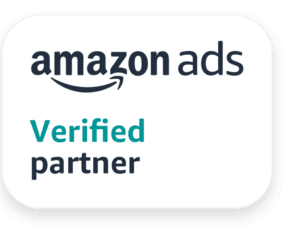This website uses cookies so that we can provide you with the best user experience possible. Cookie information is stored in your browser and performs functions such as recognising you when you return to our website and helping our team to understand which sections of the website you find most interesting and useful.
27 Jan

Drive Higher Conversions on Ecommerce through Enhanced Search Feature
Whichever product you sell, encouraging customers to buy more while shopping on your website is one of the best ways to boost your website’s revenue. While many retailers tend to focus on conversion rates and marketing campaigns, increasing average order value often gets overlooked. Upselling and cross-selling techniques, when used effectively, can be key strategies to grow average order value. By leveraging these high performing tactics, you can squeeze more value out of the customers you are already attracting and in turn boost the overall revenue.
In this article, we dive into effective ways of upselling and cross-selling to get your customers to spend more on your online store.
First, let’s understand what is upselling and cross-selling?
In upselling, the website shows a premium alternative or a higher priced variant of the same product. This price increase is backed by additional features and benefits like a larger size. Incentivizing the customer to buy a higher quantity of the same product through coupons or promotions can be another way to upsell. Thus, upselling focuses on the customer’s incentive purchases.
While in cross-selling, the website shows a product which is relevant to the product customer is currently looking for. Unlike upselling, cross-selling encourages the customer’s impulse purchase to increase the total order amount. Bundles of the same or relevant product can also be a prime choice to upsell or cross-sell for any business as they help in increasing the customer’s total order value.
The customer journey on your website can provide exceptional insights into the prime locations for cross-selling and upselling. The four fundamental spots are the product display page, cart page, checkout page, and the order confirmation page. Let’s explore how they can be leveraged to increase the cart size.
- Product display page: If the customer has landed on a product page after surfing through the website, it is recommended to display ‘Frequently Bought Together’ above the fold. Since the customer has just stepped out of the exploratory phase to buy their desired product, cross-selling a complementary product to buy along with their current choice can prove to be extremely beneficial. On the other hand, if the customer has landed on the product page by clicking on an advertisement, then placing ‘ Similar Items’ above the fold is recommended. Since the customer is still exploring, upselling a higher priced and premium alternative can be easier. Furthermore, try enticing the customer by displaying products with tags like ‘Most Popular’, ‘Best Selling’ and ‘Most Reviewed’. Adding tags like ‘Last One Left’ can also target the customer’s ‘Fear of missing out’, driving them to make an impulse purchase.
- Cart page: If your company offers free shipping over a minimum price, it gives you a great opportunity to display recommended products that cover the difference between the cart price and the minimum shipping price. Using convincing captions like ‘Add this product to get free shipping’ can motivate the customer to purchase additional products. Another option where upselling and cross-selling can be useful, is setting a minimum price for a coupon or offer to be activated. If the cart value does not match the minimum price, suggest a few more products which complement the product in the cart to cover the price difference. Incorporating a captivating header like ‘Add this to the order to get 20% off’ can further convince the customer to buy additional products. These tactics target the customer’s impulse to gain an offer and buy more products at the same time, increasing the overall cart value.
- Checkout page: At this stage in the buying process, the customer is certain about purchasing a product which allows us to upsell. A key thing to remember is never let the customer go back to the research stage after they have reached the checkout stage. Thus, targeting the customer’s motivation to buy the product by displaying a lucrative variant of the product will serve our purpose of upselling. We can also cross-sell standard complementary products but they should require zero research. For example, displaying a tongue cleaner if the customer is going to buy a toothbrush. Since the customer should only move forward from here on, it is important to update the total payable amount after the customer adds any of the cross-sells or the upsells.
- Order confirmation page: On this page, drive their attention to the products they viewed but didn’t add to the cart using statements like ‘You Forgot to Add..’. It is still important to tailor the recommendations as per the product they are purchasing. Hence, these products can be both higher priced alternative or complementary products which require less-research.
In summary, incentivizing customers in each step of the shopping journey can help in growing your store’s average order size and boosting the overall revenue. Whether it is displaying premium alternatives or complementary products, consistently upselling and cross-selling to new and existing customers can be a surefire way to scale up your business. After all, it is easier to make a customer buy more products than it is to make one a customer.
Want to boost your website’s revenue with tailored upselling and cross-selling strategies? Hit reply and let’s chat!
Related Post
Industries Served
United States
India













